Within its series of Lectures on Islamic Heritage, Al-Furqān Islamic Heritage Foundation organised a public lecture titled “Medieval Muslims and Egyptian Hieroglyphs’’, delivered by the renowned Egyptologist, Professor Okasha El-Daly. The lecture took place on Wednesday, 11 May 2016, at Al-Furqān Islamic Heritage Foundation’s headquarters in London.
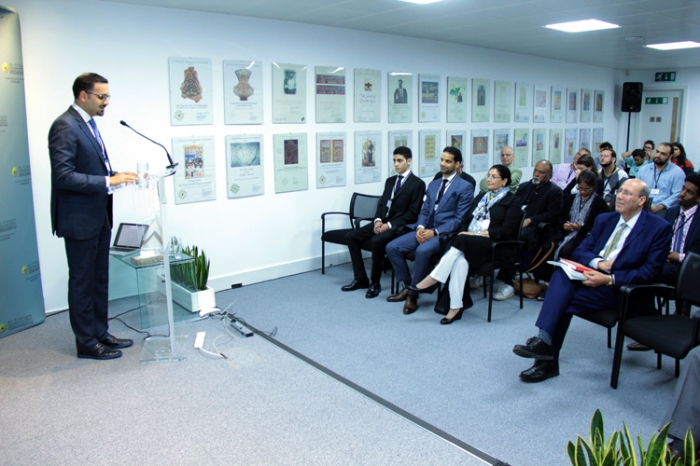
After the welcoming words delivered by Mr Sharaf Yamani, Member of the Board of Directors of Al-Furqān, the lecture was introduced by Mrs Karima Benaicha, head of the Library and Online Database Department at the Foundation.
The keynote speaker, Professor Okasha El-Daly, engaged the audience in a discussion around a much neglected area in the history of Egyptology, namely the representation and study of ancient Egypt in medieval Arabic sources. In his lecture, Professor El-Daly demonstrated the potential that these Arabic sources have, to fill the gap between the classical Greek and Latin sources and the later European studies on ancient Egypt.
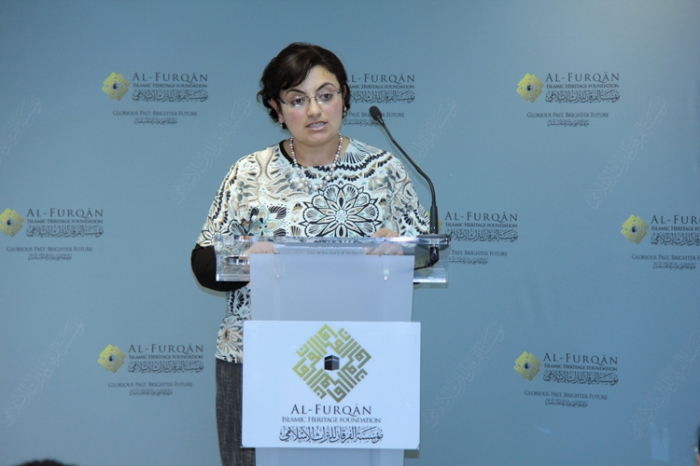
According to Professor El-Daly, Egyptology is a field of study that is widely thought to be European in origin, despite the significant contribution of medieval Arabic sources. The first European scholars of ancient Egypt were aware of some of these sources and learned Arabic in order to access them. Indeed, they could not achieve what they did in their study of ancient Egypt without them; however, they rarely mention the Arabic sources as the main reference for their studies.
Medieval Muslims had first-hand knowledge of ancient Egypt and were often impressed by its great monuments dotting the landscape of the Nile Valley, many of which were still intact and displaying remarkable hieroglyphic texts in original colours. The extensive medieval Muslim writing in Arabic left us enough materials to make a valid interpretatio Arabica of ancient Egypt.
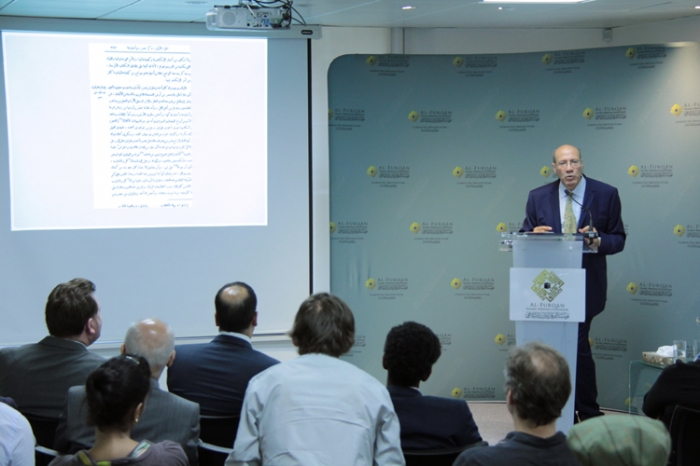
The impetus for medieval Muslim scholars to study ancient Egypt and its scripts led them to many successful attempts to decipher hieroglyphs, having realised that it had an alphabet a thousand years before Champollion. Professor El-Daly showed several examples of these attempts during his lecture, including the Kitāb al-Iklīl min Ansāb al-Yaman wa-Akhbār Ḥimyarby Abū Muḥammad al-Ḥasan al-Hamadānī (d. 334 A.H./945 A.D.), the first work in the field of palaeography, where al-Hamadānī copied several ancient scripts and translated them, including Egyptian hieroglyphics.
The medieval Muslim understanding of ancient Egyptian sciences, architecture and religion was truly sophisticated, as they interpreted both form and function of the pyramids, temples, and the role of magic, the nature of royal cults, animal cults and holy sites.
Thus, learning the ancient Egyptian language and deciphering hieroglyphs was of great importance for Muslim scholars. On one hand, understanding how to decipher hieroglyphs could provide a practical system for encrypting secret messages; on the other hand, understanding the meaning of the hieroglyphs could bring to light scientific and philosophical knowledge that these texts conveyed.
Professor El-Daly pointed out, for example, how ancient Egyptian medicine is still relevant today and how useful the study of Arabic sources could be to bring to light medical practices of ancient Egypt that were deciphered and adopted in later periods thanks to the studies of Muslim scholars.
Many medieval Muslim scholars thought that Egypt was the land of science par excellence and were impressed by the many examples of different scientific mirabilia attributed to scientists of pre-Islamic Egypt. This is why they held in high esteem the famous Queen Cleopatra as a great scholar and philosopher, a significantly different narrative on this historical figure from its Western counterpart.
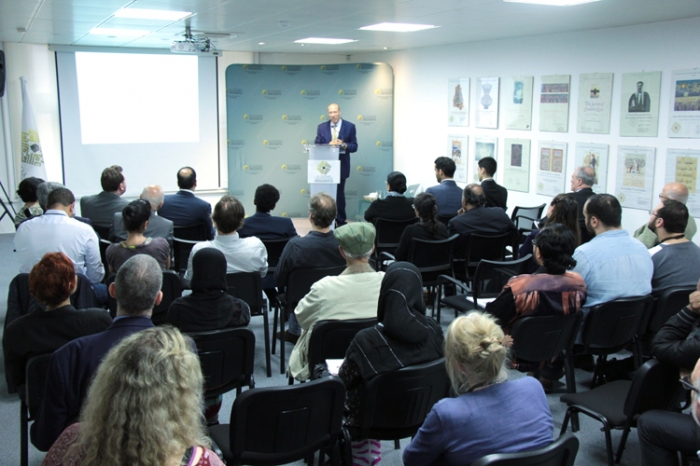
Other medieval Muslim scholars were interested in the philosophical knowledge enclosed in the ancient Egyptian texts. For example, the Sufi scholar Dhū al-Nūn al-Miṣrī (d. 246 A.H./860 A.D.) linked ancient Egypt to Sufism by studying the Egyptian texts for their philosophical value. In particular, thanks to Dhū al-Nūn, the Ancient Egyptian language was linked to the Coptic language and a great deal of similarities were found between these languages, so that it allowed for a major development in the field of hieroglyph interpretation and translation.
Professor El-Daly is the first scholar to draw attention at an international level, towards the need for more scholarly work on the deeply understudied subject of Egyptology in medieval Arabic sources. The reasons that medieval Muslims had for studying ancient Egypt were various and often different from their European counterpart, and they could offer new and different perspectives to be studied and developed in the science of Egyptology.
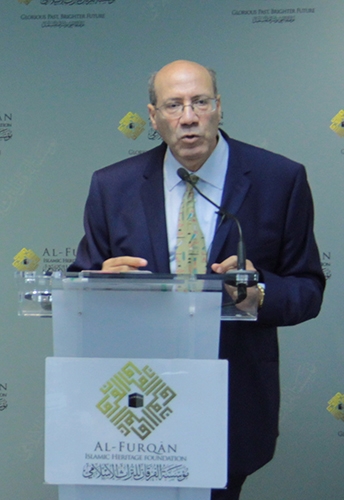
Professor Okasha El-Daly
Graduated from The Faculty of Archaeology, Cairo University.
Gained his PhD in the history of Egyptian archaeology in medieval Muslim Civilisation from the Institute of Archaeology, University College London.
Taught Egyptian archaeology in the UK and Egypt.
Worked at the Petrie Museum of Egyptian archaeology, on an outreach programme targeting the Arab community to spread interest in their own heritage.
Was the Director of Projects at the Foundation for Science, Technology & Civilization, UK, the parent organisation of the pioneering exhibition “1001 Inventions”, which is an international interactive exhibition showing the extent of the scientific progress in Muslim Civilisation.
He authored, edited and translated several works in archaeology, history and museum studies in both English and Arabic. Most notably, his ground-breaking book on the history of archaeology and cultural heritage studies in medieval Muslim Civilisation titled: “Egyptology: The Missing Millennium. Ancient Egypt in Medieval Arabic Writings”, which was published by University College London Press 2005, showing the depth and extent of medieval Muslim and Arab scholarly contributions to the study and preservation of the ancient cultures and their monuments, especially that of ancient Egypt, in order to benefit from its sciences; just as the Greeks, Romans and other scholars had done.
He is interested in cultural heritage issues and the scientific contributions within earlier Muslim cultures, as well as public interaction with heritage and science, which should be of continued value to our lives.
He was the Director of Projects in the Qatar-Sudan Archaeological Project (QSAP), Qatar Museums, and a member and rapporteur of the Scientific Board of QSAP which funded 40 international archaeological missions working in Sudan, in a pioneering project planned to last until 2022, with an allocated budget of 135 million US$.
He is currently chairing an interdisciplinary research group on the history of science in Muslim Civilisation, at the Centre for Humanities and Social Sciences, College of Arts and Sciences, Qatar University.

